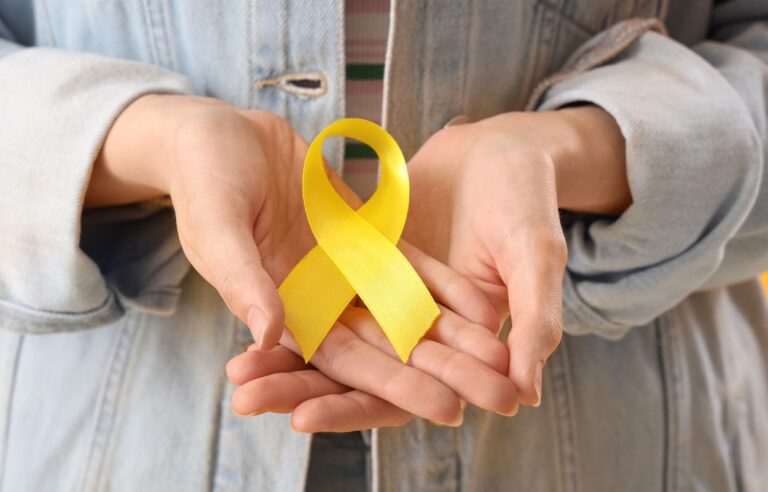Introduction to Sarcoma
Sarcoma is a rare form of cancer that originates in the body’s connective tissues, including bones, muscles, fat, blood vessels, and cartilage. Unlike carcinomas, which are more common and affect organs like the lungs or breast, sarcomas develop in soft tissues and bones. Due to their rarity and diverse subtypes, sarcomas are often challenging to diagnose and treat.
Historical Overview of Sarcoma
The earliest recorded cases of sarcoma date back to ancient medical texts, where physicians described aggressive tumors in bones and muscles. The term “sarcoma” was officially coined in the 19th century by German pathologist Rudolf Virchow. Advancements in medical imaging and molecular research over the 20th and 21st centuries have improved early detection and treatment approaches, but sarcoma remains a challenging disease due to its complexity.
Global Statistics on Sarcoma
Sarcomas account for about 1% of all adult cancers and 15% of childhood cancers. Each year, approximately 400,000 new sarcoma cases are diagnosed worldwide. The incidence varies by type:
- Soft tissue sarcomas affect roughly 13,000 people annually in the U.S. alone.
- Bone sarcomas are less common, with about 3,600 new cases per year.
- The five-year survival rate depends on factors like cancer stage and subtype, ranging from 50% to 80% in localized cases.
What Causes Sarcoma?
The exact causes of sarcoma are not fully understood, but research points to several risk factors:
- Genetic predisposition – Conditions like Li-Fraumeni syndrome and neurofibromatosis increase the risk.
- Radiation exposure – High doses of radiation therapy can sometimes lead to sarcoma years later.
- Chemical exposure – Industrial chemicals like herbicides, dioxins, and certain toxins are linked to increased sarcoma risk.
- Chronic irritation or injury – Though rare, some sarcomas develop at previous surgical sites or chronic wounds.
Common Symptoms of Sarcoma
Sarcomas often go unnoticed in early stages due to their slow-growing nature. However, symptoms vary depending on location and type:
- Soft tissue sarcomas: A painless lump that grows over time, sometimes causing swelling or pressure on nearby organs.
- Bone sarcomas: Persistent bone pain, swelling, fractures with minor trauma, and reduced mobility.
- Abdominal sarcomas: Symptoms like bloating, unexplained weight loss, and digestive issues.
Diagnosis: How Sarcomas Are Identified
Early diagnosis is crucial for effective treatment. Physicians use a combination of:
- Imaging tests – MRI, CT scans, and PET scans help visualize tumors.
- Biopsy – A tissue sample is taken for pathological analysis to confirm malignancy.
- Genetic and molecular testing – Identifies specific mutations, which can help guide targeted therapy.
Treatment Options for Sarcoma
Sarcoma treatment is highly individualized and depends on tumor location, stage, and subtype. The main options include:
1. Surgery
Surgical removal is the primary treatment for localized sarcoma. Limb-sparing techniques have significantly improved, reducing the need for amputations in bone sarcoma patients.
2. Radiation Therapy
Radiotherapy helps shrink tumors before surgery or eliminate residual cancer cells afterward. Advanced techniques like Intensity-Modulated Radiation Therapy (IMRT) and Proton Therapy minimize damage to healthy tissues.
3. Chemotherapy
Chemotherapy is commonly used for aggressive sarcomas or cases where surgery is not an option. Drugs like doxorubicin and ifosfamide are standard treatments.
4. Targeted Therapy & Immunotherapy
- Targeted therapy focuses on genetic mutations specific to sarcoma cells, reducing side effects.
- Immunotherapy harnesses the body’s immune system to fight cancer, showing promise in certain sarcoma types.
Prognosis and Survival Rates
The prognosis for sarcoma depends on factors such as:
- Tumor size and stage at diagnosis
- Histological subtype (e.g., osteosarcoma vs. liposarcoma)
- Patient’s overall health
Localized sarcomas have a 5-year survival rate of 70-80%, while metastatic sarcomas drop to around 15-30%. Early detection significantly improves outcomes.
Can Sarcoma Be Prevented?
While there is no guaranteed way to prevent sarcoma, some measures can reduce risk:
- Avoid excessive radiation exposure unless medically necessary.
- Protect yourself from harmful chemicals in industrial settings.
- Maintain a healthy lifestyle with a balanced diet and regular exercise.
- Genetic counseling for those with a family history of sarcoma.
Final Thoughts
Sarcoma is a complex and rare cancer that requires specialized diagnosis and treatment. With advancements in medical technology and innovative therapies, survival rates continue to improve. Awareness, early detection, and access to expert care can make a significant difference in patient outcomes.


